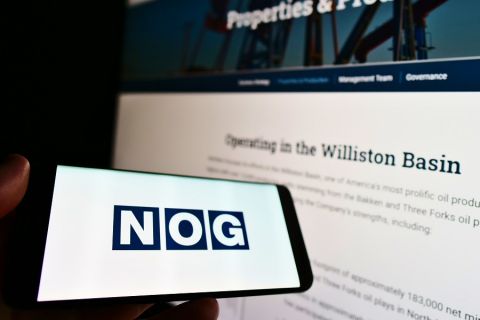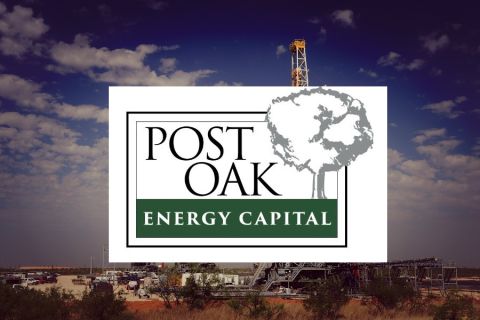Its latest lease on life began 12 years when Apache Corp. took over and implemented a major revamp of the development’s five hard-working platforms and related infrastructure. Few would have predicted when it began flowing oil that—40 years later—operator Apache would have carried out a complete makeover of the existing field complex, both topsides and on the seabed, let alone add a brand new installation an astonishing 38 years after first oil.
The transformative multibillion dollar redevelopment of the Forties complex represents one of the largest brownfield capital projects ever undertaken on the U.K. Continental Shelf, and has extended its productive life into the next decade and beyond. Somehow that seems appropriate, considering BP’s original flagship development was itself one of the largest greenfield capital projects carried out during the “golden era” of the North Sea in the 1970s.
The building and installation of the four large steel-jacket platforms and topsides (Alpha, Bravo, Charlie and Delta), along with all the associated infrastructure, and then running it safely and productively was a massive challenge for the company and its people. But they rose to that challenge and delivered it with flying colors, eventually adding a fifth platform, Echo, in 1985. It was one of the greatest achievements in the North Sea’s history and remains so to this day.
Redevelopment plan
But by the early 2000s BP had reached a point where it knew it had to do something extraordinary to take this declining giant forward into a new era.
The operator carried out detailed engineering studies costing several million dollars on a potential redevelopment, centered on the installation of an entirely new and large standalone central processing platform, with the other existing facilities to be converted essentially to drilling and pumping stations, with no processing taking place on them.
The new installation would receive and process the fluids, with a new pipeline to then go to the Forties Unity platform. In addition, the study also proposed a ring main to enable a massive waterflooding reservoir program to enhance production and increase the recovery rate. The estimated capital cost of this redevelopment work aimed at giving Forties up to an extra 30 years of productive life was eventually put at close to $1 billion—a price, however, that BP’s board decided in 2002 it could not sanction due to what it felt were marginal economics at a time of low oil prices (circa $12/bbl).
Step forward Apache
A sale to the right kind of buyer with a fresh and innovative approach was the obvious choice for BP and the best way of offering Forties a lasting future. Step forward Apache, with its bold acquisition in 2003.
Having recognized that it could make the Forties Field work with a different approach, it immediately set to examining every detail of the project, top to bottom. Nothing was considered too small to be considered for improvement, and with the direct and invaluable input of the Forties Field team that largely transferred to Apache with the acquisition (more than 300 personnel), it had a wealth of experienced insights and opportunities to tap.
One thing it knew straight away was that BP and the U.K. fabrication yards had done an outstanding job back at the start of the field’s life. All the steel platforms were built to be exceptionally strong and robust to withstand the harsh environment of the Central North Sea. Built to last, they were and remain to this day structurally in great shape. Apache knew it had core facilities that were more than capable of being both safe and economically productive for decades to come.
Strong foundations
According to Mark Richardson, Apache’s North Sea projects group manager, “When Apache acquired the Forties [Field], we already knew that these platforms were completely strong structurally, and with full integrity. Actually you could say they were overengineered, but that was typical of these type of pioneering original North Sea developments, where the original operators had to be sure of building facilities that last at a time when they had no previous experience to draw on in the region.
“My job has been to upgrade, refurbish and replace facilities across Forties. In 2014 we did 168 projects in this group. Overall we’ve done thousands of individual projects, large and small, investing more than $4 billion in the process. There have been so many we’ve carried out, and they’ve all added up to the change that has been achieved in the field’s productivity. It has been a leader in production efficiency in the North Sea, enabling the company to be able to still make money in this low oil price environment.”
Under Apache’s operatorship the production efficiency of Forties has risen from an initial 65% in 2003 to about 90% today, a top-tier performance from this venerable development. Field production in the first three quarters of 2015 averaged about 50,000 bbl/d, compared to 42,000 bbl/d in 2003 when Apache took over.
Well-maintained platforms
Much of that success has been down to the brownfield program’s focus on revamping and improving six primary areas:
• Power generation and distribution systems;
• Rotating equipment;
• Simplified topsides;
• Gas-lift capacity for improved artificial-lift performance and NGL recovery;
• Produced water-handling and injection systems; and
• Production import to export systems.
Richardson said simply, “Well-maintained platforms decrease unplanned downtime and increase efficiencies.”
Power and gas ring main
A fundamental reason for the development’s hugely improved operationalefficiency was the installation and commissioning of the power and gas ring main in 2006.
Previously each of the field’s five platforms worked independently, with its own power generation and production system. This standalone facility approach meant that when problems were encountered, each platform would essentially have to be powered down and a complete restart undertaken, meaning a slow process before production was eventually restarted—sometimes up to three or four days, with a resulting negative impact on production and revenues.
“What we did was install a 4.5-in. gas line and link all the platforms together by a 33-kW power ring main around the whole field, then put new power generation on Forties Charlie and Forties Alpha. Then we could power from anywhere else in the field,” Richardson said. “It was a major installation project.”
Today, along with the increased installation and use throughout the field of electric submersible pumps, oil can now start pumping to the surface almost immediately upon restart.
Heerema’s Thialf heavy-lift vessel carried out the 6,500-tonne FASP topsides lift in 2013. FASP’s topsides cost per tonne came in at $54,865, between 20% and 30% less than the industry norm. (Source: Apache Corp.)
Control system
The other key factor for the improved operational efficiency, according to Richardson, was the installation of the Delta V control system on the field, replacing the antiquated previous analogue system. This digital control system enabled Apache to monitor the entire plant, identify potential failings and faults, and raise the efficiency level to industry-leading performance.
“Those two things, the ring main and the control system, have fundamentally changed the field from a project perspective in the way it functions,” Richardson said. “For me, those are two real highlights for this project. I’m also really proud of the Bacchus subsea tieback to Forties Alpha, because it was done between 20% and 30% cheaper than the norm and has had an uptime of more than 99%.”
These improvements, plus the myriad of other modifications and replacements across all the assets (Apache also replaced the vast majority of the field’s original subsea pipelines), means that Forties is now a completely different animal from the project acquired by the company almost 13 years ago.
FASP focus
The most eye-catching highlight, however, has been the installation of a whole new platform some 38 years after the field first began flowing oil.
The Forties Alpha Satellite Platform (FASP) came into being essentially because Apache realized in about 2009 that it was running out of platform well slots and needed more power generation and gas-lift wells. “We needed to grow. So we did FASP and did it eventually 20% cheaper than the industry norm,” Richardson said. “It was just an idea. We were sitting around a table, and it grew from there.”
The platform was a major commitment to the future of the Forties by Apache, representing an investment of $675 million as well as being the first Central North Sea platform built in the U.K. for 25 years.
Built by Offshore Group Newcastle in Tyneside, England, and installed in 2013 (the year after BP’s planned decommissioning date for Forties at the time of Apache’s acquisition), the facility has a 5,700-tonne 4-leg steel jacket and a total weight of 18,460 tonnes, with the platform bridge-linked 90 m (295 ft) to Forties Alpha. With 18 well slots, it has enabled Apache to continue its targeted drilling campaign aimed at accessing the many smaller oil pools that exist in the surrounding area.
Reduced costs
Impressively, FASP was done in just 23 months, with a topsides cost per tonne of $54,865 (20% to 30% cheaper than the norm). Apache also won a business efficiency award for FASP from the industry association Oil and Gas UK.
Richardson said Apache’s creative approach again played a key role in bringing FASP to reality. This included selecting a company to carry out the fabrication using a mothballed yard. “I selected a company that was in receivership. But they had the right attitude, the right aptitude, and so on. We didn’t go to a front end engineering and design contractor. We just went straight to the fabricators and said ‘Can you build this?’ It led to the creation of 2,000 direct jobs and more than five million man-hours of work.”
He also added that the whole project was done with a remarkably small operator team, only 27 individuals compared to a more normal figure of between 200 and 300 people.
Richardson said, “What has been achieved so far on Forties offers hope to the rest of the industry. Apache took aging assets and made them highly productive and highly profitable. The field is currently forecast to be producing until at least 2032.”
Recommended Reading
Air Products Sees $15B Hydrogen, Energy Transition Project Backlog
2024-02-07 - Pennsylvania-headquartered Air Products has eight hydrogen projects underway and is targeting an IRR of more than 10%.
Atlas Energy Solutions Declares Dividend
2024-02-09 - Atlas Energy’s dividend represents a 5% increase from the previous quarter’s dividend.
Northern Oil and Gas Ups Dividend 18%, Updates Hedging
2024-02-09 - Northern Oil and Gas, which recently closed acquisitions in the Utica Shale and Delaware Basin, announced a $0.40 per share dividend.
Permian E&P Midway Energy Partners Secures Backing from Post Oak
2024-02-09 - Midway Energy Partners will look to acquire and exploit opportunities in the Permian Basin with backing from Post Oak Energy Capital.
NGL Energy Partners Announces Cash Distribution
2024-02-08 - Payments to holders of NGL Energy Partners’ Class B and C preferred units will be made Feb. 27.





